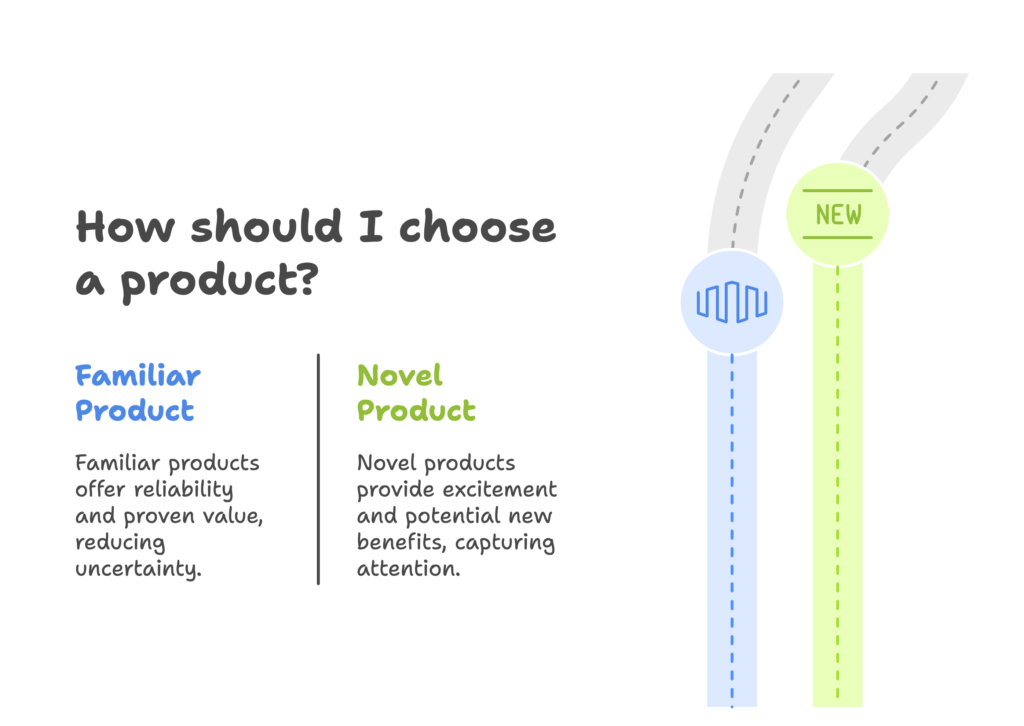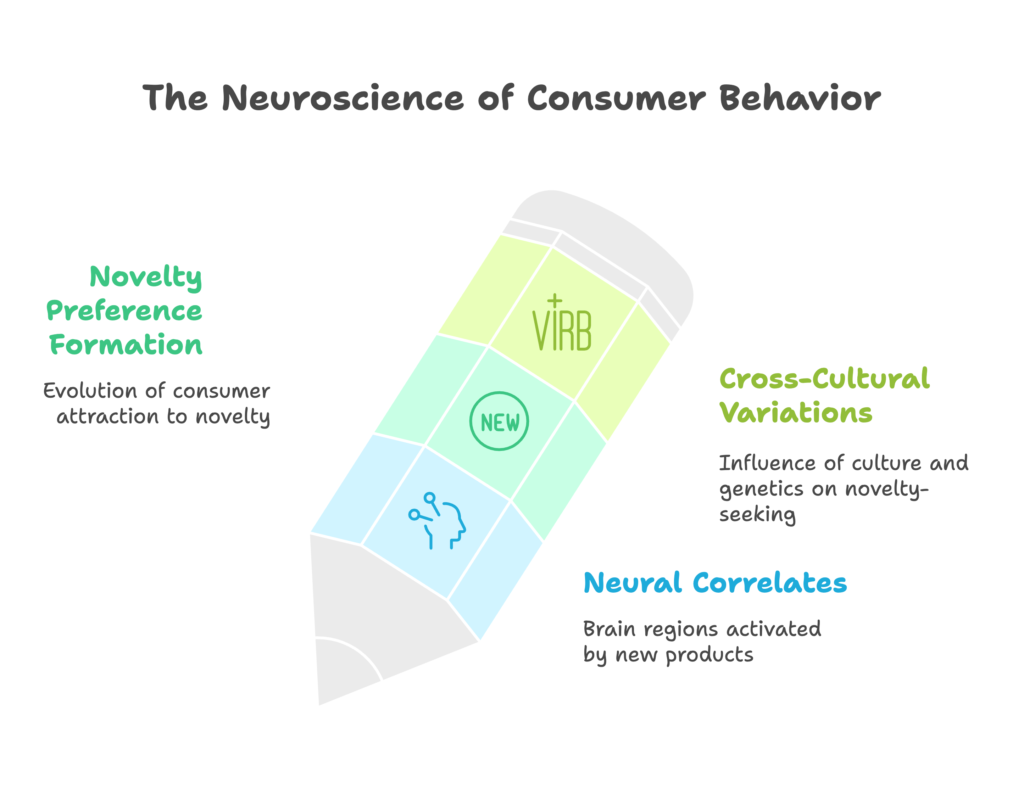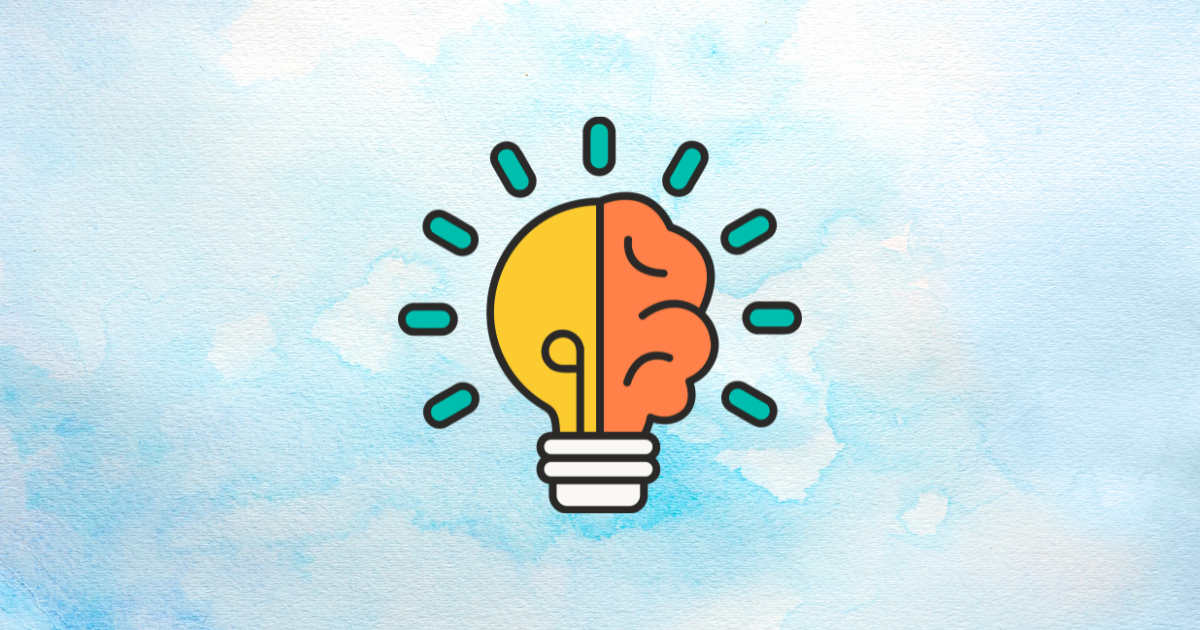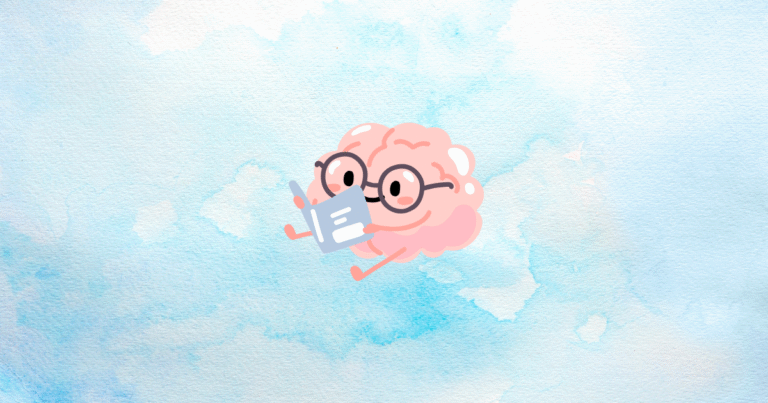Have you ever wondered why that shiny new smartphone catches your eye, even when your current one works perfectly fine? Or why limited edition products create such a buzz? Your brain is wired to notice what’s new – it’s not just marketing magic, it’s neuroscience!
In this article, we’ll explore the fascinating relationship between your brain and new products. You’ll discover:
- How your brain is naturally programmed to seek novelty
- Why new products trigger special responses in your mind
- How smart companies use neuroscience to capture your attention
- Practical ways businesses can apply these insights without complex technology
Ready to peek inside your own brain and see why that “New!” label is so irresistible? Let’s dive in!
Neural Foundations of Novelty Detection
Your brain is a novelty-seeking machine. This section explores why we’re naturally drawn to new things and the biological mechanisms that make novelty so captivating.
Biological Basis of Novelty Seeking
Our attraction to novelty isn’t just a personality quirk—it’s an evolutionary advantage. Early humans who explored new environments discovered new food sources, safer shelters, and better resources. This curiosity-driven exploration was so valuable that it became hardwired into our brains.
The hippocampus, a seahorse-shaped structure deep in your brain, plays a star role in novelty detection. It quickly compares what you’re experiencing against what you already know, creating a “that’s different!” signal when something new appears. This happens in two main ways:
- Absolute novelty – when you encounter something completely new
- Contextual novelty – when something familiar appears in an unexpected place or time
This is why a completely new product design catches your attention, but also why seeing your favorite brand in a surprising new color can be equally exciting.
Neurotransmitter Systems in Novelty Response
When you encounter something new, your brain releases a cocktail of chemicals that create that special feeling of excitement. The star players include:
- Dopamine – Often called the “reward chemical,” dopamine surges when you encounter novelty, creating feelings of pleasure and anticipation. This is the same system activated by eating delicious food or receiving praise, making novelty literally rewarding.
- Noradrenaline – This chemical helps direct your attention toward new stimuli, ensuring you don’t miss important changes in your environment.
- Acetylcholine – This helps your brain form memories about novel experiences, ensuring you remember that exciting new product.
Together, these chemicals create a powerful cocktail that makes novelty both attention-grabbing and emotionally engaging. This is why unboxing a new product feels so satisfying!
Brain Network Interactions
Novelty detection isn’t isolated to one brain region—it involves complex networks working together:
- Your prefrontal cortex (decision-making center) and hippocampus (memory center) work together when you explore new options.
- Visual processing areas light up more intensely when viewing novel images compared to familiar ones.
- The default mode network (active when you’re daydreaming) temporarily quiets down during novel experiences, allowing you to focus completely on the new stimulus.
This whole-brain response explains why new products can be so captivating—they literally occupy more of your mental resources than familiar items do.
Now that we understand the hardware of novelty detection, let’s examine how these neural systems shape our everyday thinking and decision-making. How exactly does your brain process that new product on the shelf? Let’s find out!
Cognitive Mechanisms of Novelty Processing
When you spot something new, your brain doesn’t just notice it—it processes it in special ways. This section explores how novelty affects your attention, memory, and decision-making.

Attentional Prioritization
Your brain has limited processing power, so it must be selective about what gets your attention. Novelty gets automatic VIP treatment in this selection process:
- When you hear an unexpected sound (like a new product jingle), your brain generates a “mismatch negativity” response that interrupts your current thoughts.
- Your visual system creates “salience maps” that highlight objects that stand out from their surroundings—like a product with unique packaging on a crowded shelf.
- Your pupils actually dilate when you see something novel, indicating increased cognitive engagement and interest.
This automatic prioritization explains why new products or redesigned packaging can “pop” from the shelf, even without you consciously looking for them.
Memory Encoding Dynamics
Novel experiences don’t just catch your attention—they’re also more likely to be remembered:
- The hippocampus uses a process called “pattern separation” to create distinct memory traces for new experiences, helping you remember them clearly.
- When you recognize something familiar with a novel twist, your cortex “reinstates” the original memory and adds the new information, creating an updated memory.
- Novel associations are preferentially consolidated during sleep, meaning that interesting new product you saw today is more likely to be remembered tomorrow.
This memory boost for novelty explains why unique products or creative marketing campaigns tend to be more memorable than conventional ones.
Decision-Making Biases
Novelty doesn’t just affect what you notice and remember—it influences your choices too:
- Humans constantly balance between “exploitation” (sticking with what works) and “exploration” (trying something new). This creates an interesting tension when deciding between a trusted product and an intriguing new alternative.
- Novel options can feel more valuable in the moment, leading to what economists call “temporal discounting” where immediate novelty can outweigh long-term benefits of familiar options.
- Paradoxically, we’re both drawn to novelty and cautious about ambiguity—explaining why successful new products often balance novel features with familiar elements.
These decision-making patterns reveal why product innovations that offer the right balance of familiarity and novelty tend to perform best in the market.
Now that we’ve explored how your brain processes novelty, let’s see how these mechanisms specifically apply to products and shopping behavior. How do these neural reactions translate into consumer decisions? Let’s explore!
Consumer Neuroscience of Product Novelty
When shopping, your brain doesn’t just make logical decisions—it responds emotionally to novelty in ways that profoundly influence your choices.

Let’s look at what happens when your novelty-seeking brain goes shopping.
Neural Correlates of Product Evaluation
Specific brain regions activate when you encounter new products:
- The nucleus accumbens (part of your reward system) lights up when you first see an appealing new product, creating that feeling of “I want that!”
- The anterior cingulate cortex activates when you experience conflict—like when deciding between a familiar favorite and an exciting new alternative.
- The insula becomes more active when products don’t match your expectations, which can happen with innovative designs that break category norms.
These neural responses happen automatically and often below conscious awareness, yet they strongly influence your purchasing decisions.
Novelty Preference Formation
Our relationship with novelty changes over time in predictable ways:
- When you first try a new product, dopamine creates a prediction error signal that enhances the experience—making new products feel more rewarding than they objectively are.
- This novelty response gradually weakens with repeated exposure (habituation), explaining why even exciting new products eventually feel ordinary.
- Interestingly, brand familiarity can enhance novelty responses—a new product from a brand you trust often creates stronger positive reactions than one from an unknown brand.
Understanding these patterns helps explain the popularity of limited editions, seasonal offerings, and continuous product updates that refresh the novelty response.
Cross-Cultural Variations
While novelty-seeking is universal, it varies between individuals and cultures:
- Genetic differences in dopamine receptors create natural variations in novelty-seeking tendencies—some people are born “neophiles” (novelty lovers), while others are more cautious.
- Cultural conditioning significantly influences novelty responses—societies that value tradition generally show more reserved reactions to novel products than innovation-focused cultures.
- Age also affects novelty responses, with younger consumers generally showing stronger neural reactions to novelty than older ones (though plenty of individual variation exists).
These differences explain why market testing across diverse groups is crucial—what feels excitingly novel to one demographic might feel jarringly unfamiliar to another.
Now that we understand how our brains respond to product novelty, how can businesses apply this knowledge? Let’s explore the practical marketing applications of this fascinating neuroscience!
Marketing Applications of Novelty Neuroscience
Smart businesses don’t just create new products—they strategically leverage our brain’s novelty response. Here’s how companies can apply neuroscience insights to capture attention and drive sales.
Product Launch Neuroscience
Successful product launches are carefully calibrated to trigger optimal novelty responses:
- Optimal novelty dosage – Products need to be novel enough to trigger interest but familiar enough to feel safe. Too much novelty can create anxiety, while too little fails to capture attention.
- Multisensory priming – Engaging multiple senses (sight, sound, touch) creates stronger novelty responses than visual changes alone, explaining why product unveilings often feature dramatic lighting, music, and interactive displays.
- Contextual framing – How you position novelty matters. Framing a novel feature as “revolutionary” versus “improved” creates different neural responses and sets different customer expectations.
These strategies explain why companies like Apple create such anticipation with their launches—they’ve mastered the art of optimal novelty delivery.
Packaging and Presentation
The physical presentation of products can amplify novelty responses:
- Visual novelty gradients – Strategic use of color, shape, and movement can make products stand out on crowded shelves, capturing attention through visual novelty.
- Tactile surprise – Unexpected textures or interactive elements in packaging create multisensory novelty, enhancing the “unboxing experience” that has become so important in consumer products.
- Olfactory novelty – Distinctive scents used in limited editions create powerful novelty markers, as our olfactory system has direct connections to emotional and memory centers.
These physical novelty triggers help explain the success of distinctive packaging like Coca-Cola’s named bottles or Oreo’s changing colors and flavors.
Pricing Strategy Insights
Pricing strategies can leverage our novelty responses too:
- New premium pricing – Consumers often accept higher prices for novel products because novelty temporarily increases perceived value, supporting premium pricing for new releases.
- Novelty depreciation curves – As novelty responses fade, strategic price reductions can maintain sales momentum, explaining the timing of discounts after initial launches.
- Anchoring effects – Introducing a novel premium option can make standard offerings seem more attractive, a strategy often seen in product line extensions.
These pricing approaches work because they align with the natural arc of our brain’s novelty response—from initial excitement to gradual habituation.
The marketing applications are fascinating, but how do companies actually measure these novelty responses? Let’s explore the tools and metrics that bring this science from theory to practice!
Measurement and Optimization Frameworks
To harness the power of novelty effectively, businesses need ways to measure and optimize novelty responses. Here’s how companies are tracking and enhancing consumer reactions to new products.
Neurometric Tools
Advanced technologies now allow direct measurement of the brain’s novelty response:
- EEG (electroencephalography) measures brain electrical activity and can detect specific patterns associated with novelty detection, providing insight into immediate novelty responses.
- fMRI (functional magnetic resonance imaging) shows which brain regions activate during product viewing, helping identify whether novelty, reward, or other systems are engaged.
- Biometric wearables track physical responses like heart rate, skin conductance, and eye movement to measure engagement with novel products in real-world settings.
While these technologies were once limited to research labs, more affordable and portable versions now allow companies to conduct neuromarketing studies that go beyond traditional focus groups.
Behavioral Metrics
Sophisticated behavioral tracking provides indirect measures of novelty engagement:
- Dwell time analytics track how long consumers look at or interact with novel features, providing a proxy measure for novelty-driven interest.
- First-interaction heatmaps show which elements of a new product attract initial attention, helping optimize placement of novel features.
- Social media virality patterns often reflect collective novelty responses, with truly novel products generating distinctive sharing patterns.
These behavioral measures allow companies to assess novelty impact without specialized equipment, making novelty optimization accessible to businesses of all sizes.
Predictive Modeling
Advanced analytics now help predict novelty responses before products launch:
- Machine learning algorithms trained on past product performance can predict likely novelty responses to new concepts.
- Novelty decay models forecast how quickly interest will fade, helping companies time product refreshes and marketing campaigns.
- Neurocognitive simulations model how different consumer segments might respond to novel features, enabling targeted product development.
These predictive approaches help companies invest more wisely in innovation by anticipating which novel elements will drive sustained engagement versus mere momentary interest.
All this theory is fascinating, but how has it worked in practice? Let’s look at real-world success stories of companies leveraging the neuroscience of novelty!
Case Studies in Neuro-Driven Innovation
The principles we’ve explored aren’t just theoretical—they’re being applied by leading companies to drive innovation and sales. Let’s see how different industries leverage novelty neuroscience for tangible results.
Tech Industry Breakthroughs
Technology companies have become masters at leveraging novelty responses:
- Apple’s product reveals are carefully choreographed to maximize dopamine response, with dramatic unveilings, strategic language (“revolutionary,” “magical”), and multisensory demonstrations that optimize novelty impact.
- Tesla’s software updates deliver contextual novelty—surprising new features appear in familiar products, reactivating novelty pathways without requiring new hardware purchases.
- Dyson’s innovation strategy focuses on multisensory novelty, with distinctive visual design, unique sounds, and tactile differentiation creating a complete novelty experience.
These approaches demonstrate how strategic novelty can create competitive advantage and price premium in highly contested markets.
CPG Success Stories
Consumer packaged goods companies have found creative ways to leverage novelty in everyday products:
- Coca-Cola’s limited editions use neural priming with seasonal packaging and flavors, creating anticipation cycles that refresh novelty responses for a century-old product.
- Glossier’s community approach involves customers in novelty co-creation, leveraging the enhanced novelty response we experience when we feel ownership in the creative process.
- Oreo’s color experiments strategically play with habituation, introducing new colors and flavors at calculated intervals to prevent complete novelty adaptation.
These examples show how even traditional products can maintain novelty appeal through creative sensory and psychological approaches.
Service Industry Applications
Service businesses are applying novelty neuroscience in innovative ways:
- Spotify’s Discovery Weekly uses algorithms designed around neural novelty response patterns, balancing familiar and novel music to optimize engagement.
- Airbnb’s experience platform employs novelty scoring to highlight unusual accommodations and activities that trigger stronger novelty responses.
- Uber’s surge pricing leverages the intersection of novelty and scarcity, creating decision urgency that takes advantage of novelty-driven temporal discounting.
These service examples demonstrate that novelty neuroscience isn’t limited to physical products—it applies to experiences, interfaces, and pricing models as well.
As powerful as these applications are, they raise important questions about responsibility and sustainability. Let’s examine the ethical considerations and future directions of novelty neuroscience.
Ethical Considerations and Future Directions
As our understanding of the brain’s novelty response grows, so do questions about responsible application. This final section explores the ethical dimensions and emerging frontiers of novelty neuroscience.
Neuroethics of Persuasion
With great knowledge comes great responsibility:
- Dopamine exploitation concerns – There’s growing discussion about where the line falls between engaging customers and exploiting neural reward systems, particularly for vulnerable populations.
- Vulnerability protection – Special consideration is needed for groups with heightened novelty sensitivity or diminished critical evaluation, such as children or individuals with certain cognitive conditions.
- Regulatory frameworks are beginning to emerge around neuromarketing data collection and application, balancing innovation with consumer protection.
These ethical considerations suggest that the most sustainable approach is using neuroscience to create genuine value, not just momentary excitement.
Emerging Technologies
New frontiers are expanding how we understand and apply novelty neuroscience:
- VR/AR experiences offer unprecedented control over novelty calibration, allowing precise balancing of familiar and novel elements to optimize engagement.
- Neural interface testing may eventually allow direct assessment of novelty responses without traditional measurement tools, though significant ethical questions remain.
- Advanced computing is enabling more sophisticated prediction of novelty responses across diverse populations, helping create products with broader appeal.
These technological advances suggest that novelty optimization will become more precise and personalized while potentially raising new ethical questions.
Sustainable Novelty Models
The future of novelty neuroscience points toward more sustainable approaches:
- Circular economy neuroscience focuses on creating novelty through transformation rather than constant new production, reducing environmental impact.
- Longevity-focused approaches aim to extend novelty through modular design, updates, and evolving user experiences rather than rapid replacement.
- Cultural heritage integration explores how traditional elements can create distinctive novelty experiences that connect to deeper values and identities.
These sustainable models suggest that the future of novelty isn’t just about what’s new—it’s about what’s meaningfully different and adds lasting value.
Conclusion
The neuroscience of novelty reveals why we’re naturally drawn to new products—our brains are wired to notice, value, and remember what’s different. From the dopamine surge of unboxing to the strategic pricing of innovations, understanding these neural mechanisms gives powerful insights into consumer behavior.
For businesses, the key takeaway isn’t just to create novelty for novelty’s sake, but to design strategic, ethical novelty that delivers genuine value while respecting how our brains naturally work. The most successful companies don’t just exploit our novelty response—they satisfy it in meaningful ways.
Remember: If you run a Shopify store, you can apply these neuroscience insights with the Growth Suite app to increase your sales by strategically highlighting product novelty and optimizing customer engagement. Try it today to see how understanding the brain’s novelty response can transform your business results!
References
- Kafkas, A., & Montaldi, D. (2018). How do memory systems detect and respond to novelty? PMC.
- Ljungberg, T., et al. (2019). The Function of Dopamine Novelty Responses in the Brain. Frontiers in Neuroscience.
- Scheier, C., & Rogers, D. (2024). Neuroscience in Marketing. Econstor.
- Plassmann, H., et al. (2015). Consumer Neuroscience. Journal of Marketing.
- Escera, C., et al. (1998). Neural mechanisms of involuntary attention. PubMed.
- Ramsøy, T.Z. (2023). What is Neuromarketing? Neurons Inc.
- Wittmann, B.C., et al. (2014). The Power of “New”. Neuromarketing Blog.
- Bunzeck, N., et al. (2014). Dopamine Modulates Novelty Seeking. PMC.
- Li, Y., et al. (2024). fMRI in Product Design. PMC.
- Contently. (2024). Novelty in Marketing.



